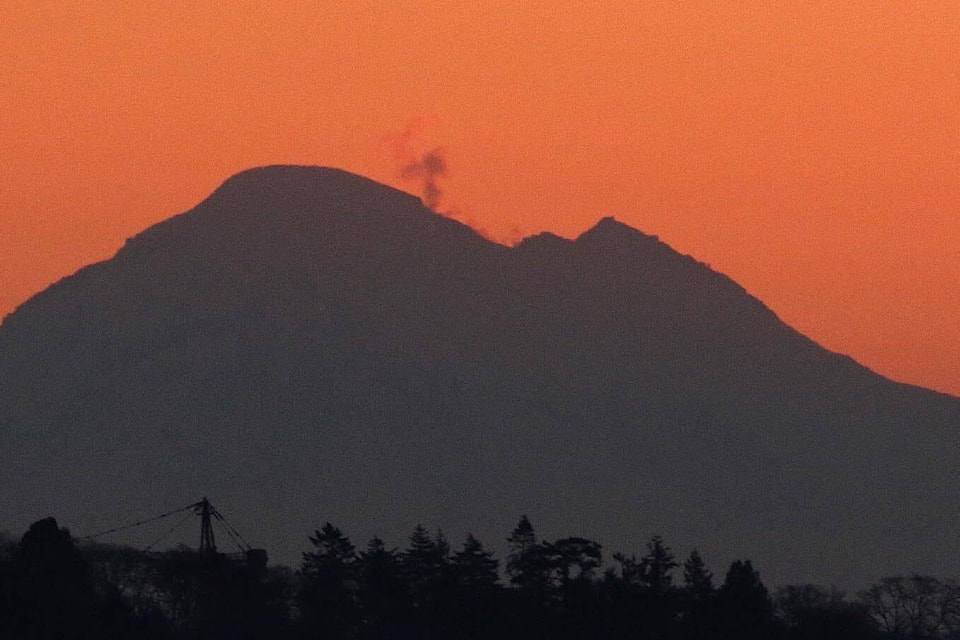Seasonal steam rising from Mount Baker is a reminder to residents that the picturesque mountain across the border is among the Cascade volcanoes.
The mountain range features a series of once-active volcanoes, but the smoking look isn’t cause for concern.
“It’s mostly hot water,” explained Dante Canil a professor in the School of Earth and Ocean Sciences at the University of Victoria.
Baker is what would be called a dormant volcano, as it hasn’t erupted in a major way for about 10,000 years. It does have a magmatic system, as do others in the Cascades considered more active, such as Mount Rainier and Mount St. Helens.
Baker has vents – or fumaroles – that go down into the mountain.
Steam is usually a result of snow melt and other water getting into the magmatic system, which heats it well beyond its boiling point.
“A lot like a hot spring,” Canil said. “It also depends on the air above it whether you see the steam.”
The nature of the conditions make it a bit seasonal, with the steam spotted and making headlines, most frequently in the spring.
READ ALSO: Five significant pieces of Oak Bay history that went up in smoke
Mount Baker has been quiet, but it could still erupt someday. The impact in Greater Victoria would be minimal.
“Of all the nearby volcanoes, it would be the least concerning,” Canil said, noting Mount St. Helens, dubbed a frequent erupter, would be a far more likely culprit.
With prevailing west to east winds, experts guess even ash fall would be minimal as the Cascades spread ash deposits mostly to the east.
“Even if Baker were to erupt … in a typical eruption we’d get maybe less than 1 millimetre,” Canil said.
There are other hazards to those volcanoes for people living close to them. When the snow cap melts during an eruption, it sends a flood of ash and mud, with the consistency of concrete, down the mountain at alarming speeds.
“For people nearby a volcano, that’s as much risk as an eruption of magma,” Canil said.
Do you have something to add to this story, or something else we should report on?
Email: christine.vanreeuwyk@blackpress.ca
@van_reeuwyk
christine.vanreeuwyk@blackpress.ca
Like us on Facebook and follow us on Twitter.
